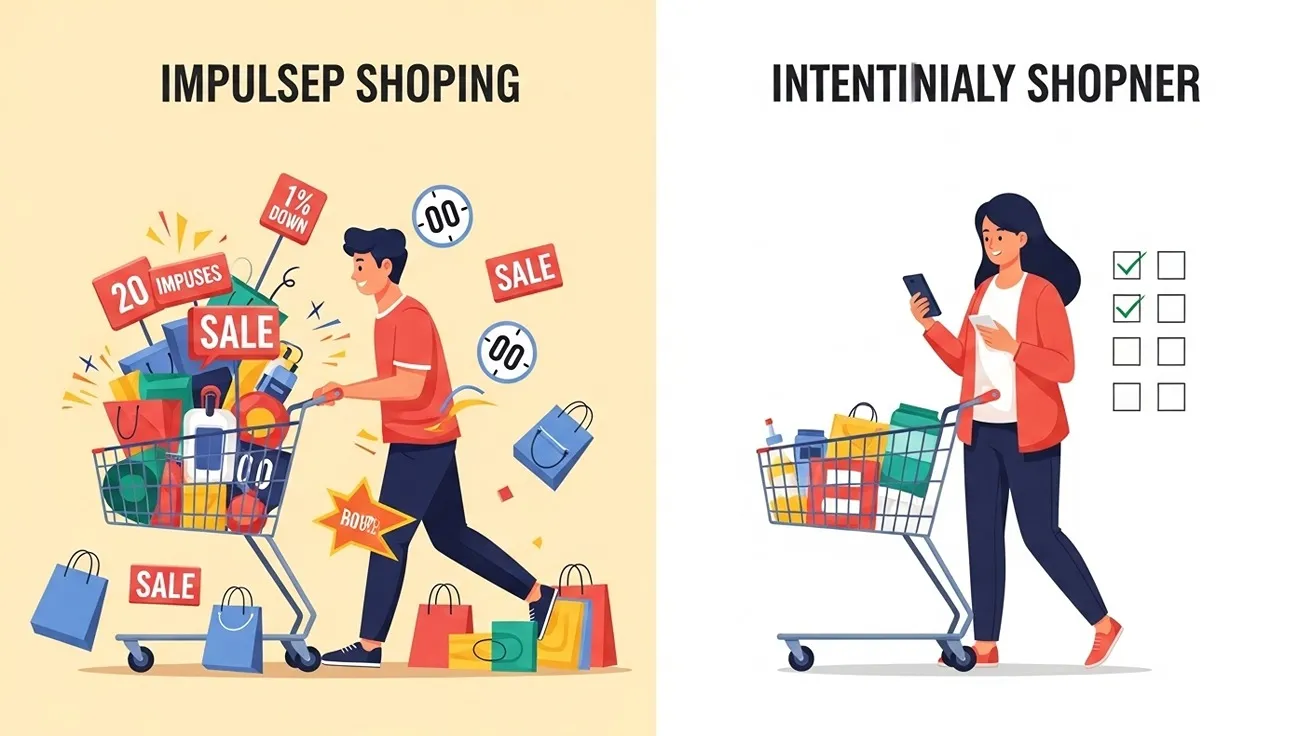
Shopping in 2025 looks very different from just a few years
ago. With mobile apps, one-click checkouts, and personalized ads, consumers are
buying faster and more frequently than ever. But behind every purchase, there’s
usually one of two mindsets: impulse shopping or intentional shopping.
Understanding which style fits today’s consumers can help you recognize your
own habits and learn how to shop smarter.
Impulse shopping is when you buy something without planning.
It’s often triggered by emotions, flashy ads, or discounts that feel “too good
to miss.” Picture this: you’re scrolling through your phone, see a “50% off
today only” banner, and buy a gadget you never thought about before. That’s an
impulse purchase.
Impulse shopping is common because retailers design
experiences that encourage it. Push notifications, countdown timers, and
limited stock alerts all create urgency, nudging shoppers to act fast.
Intentional shopping, on the other hand, is the opposite.
It’s when you carefully plan your purchase. You make a list, compare prices,
read reviews, and only buy what you truly need or value. For example, instead
of grabbing the first pair of headphones on sale, you research the best model,
check for deals, and then purchase it when the time is right.
Intentional shopping requires discipline, but it usually
leads to more satisfaction. Shoppers who plan often feel confident and avoid
regret later.
The truth is, most shoppers in 2025 mix both styles.
Technology makes impulse buying easier than ever, but at the same time,
consumers have more tools for planning. Price comparison apps, coupon
platforms, and AI-driven shopping assistants are making intentional shopping
more convenient.
This balance shows that consumers want both convenience and
control.
The challenge for today’s consumers is finding the right
mix—enjoying the thrill of spontaneous buys while keeping finances in check.
You don’t have to fully give up one style for the other.
Here are a few smart tips for balancing impulse and intentional shopping:
With these steps, you can enjoy shopping without guilt or
regret.
Consumers in 2025 are not just impulse buyers or intentional
shoppers—they are both. The key lies in balance: enjoying the excitement of
unplanned purchases while staying grounded with thoughtful spending. Whether
you lean more toward impulse or intentional habits, being aware of your style
can help you shop smarter, save more, and avoid unnecessary regret.
If you’re looking for insights, reviews, and smarter
shopping guides, explore more at TrandyReviews.